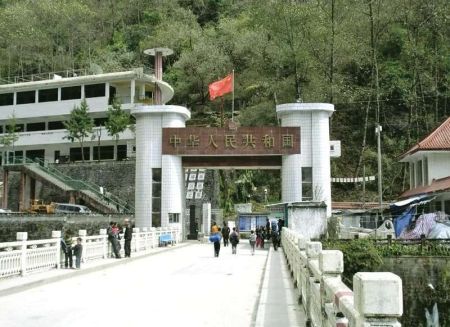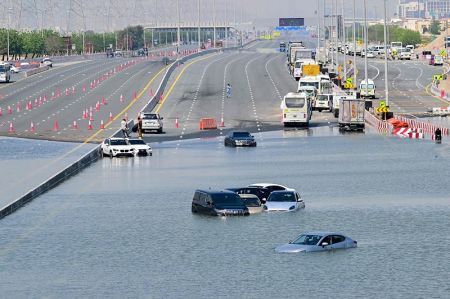.jpg)
--By Hom Nath Gaire
The phrase 'Inclusive Growth' is quite popular in recent days not only among academia but also with policy makers, development partners and media as well. It seems that there is paradigm shift in development strategies among the stakeholders. The concept of inclusive growth refers to both the pace and distribution of economic growth. In order for growth to be sustainable and effective in reducing poverty, it needs to be inclusive.
Traditionally, poverty (or inequality) and economic growth analyses have been done separately. However, recent works indicate that there may not be a trade-off between equity and efficiency as suggested by Okun (1975) and that it would be a big mistake to separate analyses of growth and income distribution. Inclusive growth has commonly been explained as about raising the pace of growth and enlarging the size of the economy by providing a level playing field for investment and increasing productive employment opportunities. The definition of inclusive growth implies direct links between the macro and micro determinants of the economy and economic growth. The microeconomic dimension captures the importance of structural transformation for economic diversification and competition, while the macro dimension refers to periodic changes in economic aggregates such as the country’s gross national product (GNP) or gross domestic product (GDP).
Sustainable economic growth requires inclusive growth. Maintaining this is sometimes difficult because economic growth may give rise to negative externalities, such as a rise in corruption, which is a major problem in developing nations. However, inclusiveness lays emphasis on equality of opportunity in terms of access to markets, resources, and unbiased regulatory environment for businesses and individuals. The inclusive growth approach takes a longer-term perspective, as the focus is on productive employment as a means of increasing the incomes of poor and excluded groups and raising their standards of living.
Determinants of Inclusive Growth
Different countries, especially developing countries, may have very different institutional as well as policy arrangements for promoting inclusive growth. Similarly, there may be a number of distortions preventing the allocation of limited resources in such a way that productivity in different sectors is equalized. The shift of resources from one sector to another may have an important effect on the overall level of output and growth.
In this context, although growth theories have contributed to our understanding of how growth is determined and how it might be influenced, it has in many ways missed some of the crucial issues for developing countries. It may be possible to model the role of management and organization, the improvement of infrastructure, and sectoral transfer in developing economies to measure real determinants of growth and to the design of policy.
They are directly concerned with the long-run growth in the sense of the steady-states as well as important for a medium term of some considerable duration. Government macroeconomic policies--- both fiscal policy and monetary policy--- are considered to be instrumental in promoting inclusive growth in the respective economy.
Fiscal Policy and Inclusive Growth
Fiscal policy involves the use of government spending, taxation and borrowing to affect the level and growth of aggregate demand, output and jobs. It is also a means by which a redistribution of income and wealth can be achieved as an instrument of intervention to correct the market failures. Thus fiscal policy is considered more effective in encouraging both pace and size of economic economy.
Based on this belief, Asian Development Bank (ADB) has recently urged the Asian governments to use their fiscal policy more adeptly to combat the widening income gaps in the region. “As the inequalities rising almost everywhere in Asia, governments need to urgently expand and improve their public investments in inclusive growth,” President Takehiko Nakao told in seminar titled, Leveraging Fiscal Policy for Inclusive Growth on the occasion of bank's 47th AGM.
More than 80 percent of Asia’s population live in countries where inequality is worsening, meaning that many are being left behind even as globalization, technological progress, and market reform have led to strong economic growth. The bank emphasized on a range of issues including taxation to boost social and other spending, existing government programmes to promote equality, and the best balance spending to help the poorest without compromising fiscal sustainability.
Monetary Policy and Inclusive growth
It is well accepted that macroeconomic stability and low inflation rates, inter alia, have positive effects on growth and on reducing inequality. In this connection, well-managed monetary policy is critical in achieving stable and inclusive economic growth. Similarly, monetary policy is mandated to achieve and maintain price stability in the interest of inclusive and sustainable economic growth along with maintaining financial stability.
Price stability reduces uncertainty in the economy and provides a favourable environment for inclusive growth and cumulative employment creation over the longer term. Low inflation, on the other hand, helps to protect the purchasing power and living standards of all classes of people. Although low inflation may not necessarily in itself reduce income inequality, it does ensure the protection of income, which is particularly important for poor people who generally do not have the means to adjust their nominal incomes to take account of rapid price increases.
PPP and Inclusive Growth
The Public Private Partnership (PPP) is a governance tool to bring together resources as well as strengths and share experiences of the public and private sector for the purpose of provisioning of public assets or services for public benefit. In order to achieve inclusive growth, developing countries should create more PPP opportunities to address their infrastructure gap and steer private money and skills into much-needed infrastructure projects.
The infrastructure deficit in the developing countries like Nepal is so enormous that we can’t expect either private investors or the public sector to fill up it alone. It needs collaboration between the private and public players to make things work, and to bring critical services to the community. Good infrastructure is critical to inclusive growth, allowing communities to access essential social services, markets, and jobs, and making cities cleaner and easier to navigate. PPPs can help developing countries address critical infrastructure needs, from roads to hospitals to water supply systems.
The PPP investment model with various structures is effective in helping centrally planned countries transition to private sector-oriented market economies. PPPs can be promoted through fully assessed and appropriate risk sharing and performance-based arrangements between the parties. The aim is to deliver “value-for-money” projects to provide a full set of benefits for investors, the public, and the economy.
Knowledge Economy and Inclusive Growth
The development of the knowledge economy and inclusiveness has been seen as closely related. Global firms have built integrated international production chains, with innovation creating new products with added value in “knowledge” areas such as design and marketing and providing associated services.
The growth of the knowledge economy is seen as part of the growth strategy to import jobs from low wage economies such as China and India investing heavily in knowledge. Shifting from low-cost manufacturing to economies based on knowledge, innovation, and high-end services is imperative for developing countries to achieve and sustain broad based inclusive growth. Emerging economies can reach and go beyond middle-income levels by becoming knowledge-based economies like Japan, the Republic of Korea, and Singapore.
Similarly, least developed countries like Nepal can upgrade themselves to developing one through systematic investment in new information and communication, manufacturing and other technologies to promote knowledge economy. For this, they have to spend time and resources to move up the value chain by drawing on best practices and latest technologies, for example, shifting to smart energy grids, cloud computing, 3D manufacturing, and mobile rather than fixed-line communications.
Rational
According to the World Bank’s Commission on Growth and Development, a persistent, determined focus on inclusive long-term growth by governments is a key ingredient of all successful growth strategies. Policies that encourage inclusive growth tend to emphasize removing constraints to growth, creating opportunity, and creating a level playing field for investment.
To that end, developing countries need to increase investment in infrastructures as well as research and development to create knowledge based, innovative and competitive industries. For this, public funding may be needed to help companies start up. Public spending on education and health services improve the well-being of the poor and augment their productive capacity.
Targeted subsidies and transfer payments protect the most vulnerable and deprived segments of society while better public infrastructure can make it easier for the entrepreneurs to create more jobs and additional value for the economy. Higher education and training need to be significantly improved to generate the skills and critical thinking processes vital to a modern competitive economy.
In addition, governments need to put in place mechanisms and adopt policies that enable innovation and creativity to flourish. This includes protecting intellectual property rights, providing adequate financing options, and nurturing more flexible labour markets.
Finally
Policies on both monetary and revenue front such as non-inflationary monetary and progressive taxation can promote inclusive growth. But among policy tools, fiscal policy with productive government expenditure and progressive taxation has a tangible effect on boosting equality and promoting inclusive growth.
What is Inclusive Growth?
An IMF Commission on Growth and Development (2008) notes that inclusiveness—a concept that encompasses equity, equality of opportunity, and protection in market and employment transitions—is an essential ingredient of a successful growth strategy.





















